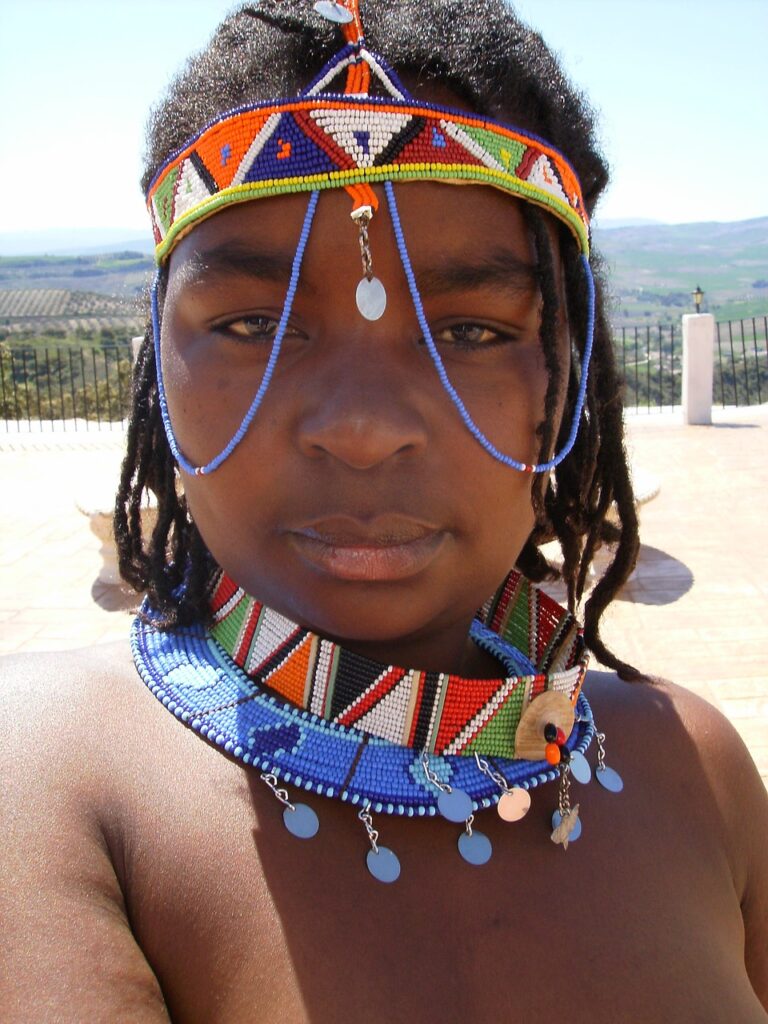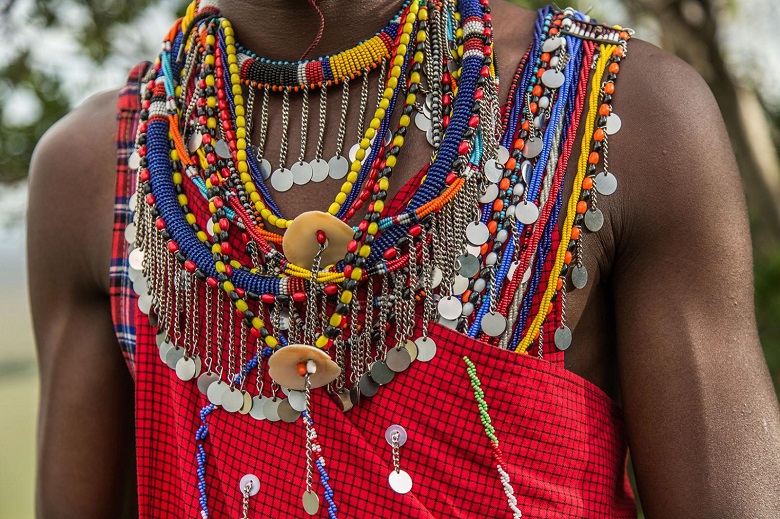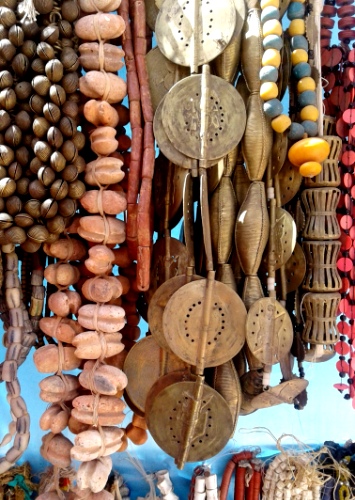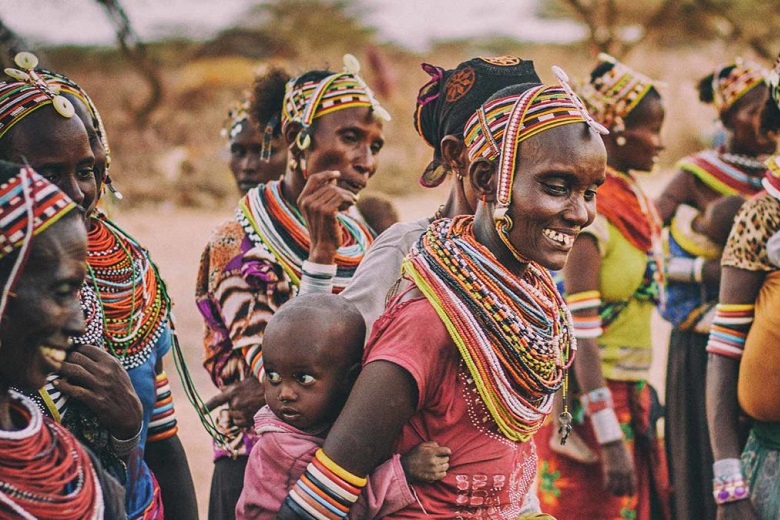Traditional African jewelry: The symbolism and meaning

Each African piece of jewelry contains its symbolism, reflecting the way of life, the unique culture, and the history of the tribes. How do you recognize what jewelry is used for specific dances or for conducting a marriage ritual, what jewelry used to decorate the body to attract the opposite, and what items use to scare off enemies?
Feathers, teeth, and even the skulls of small animals are used together with minerals and metals to create the most typical African jewelry that still exists in some tribes today.

For centuries, men and women have worn jewelry that is characteristic of marriage rituals. The tribal Men dance, covered from head to toe with jewelry, to find their life partner. On the other hand, the youngest woman must choose her chosen one among the applicants.
The main criterion is that a man should be the most beautiful and attractive, and jewelry can help. While in other ancient civilizations, the presence of jewelry indicated social status, in Africa, jewelry is a symbol of strength and a great opportunity.
Products and materials
Among the most common adornments is a plate placed on a woman’s lower lip before marriage. This practice is widespread among the tribes of Ethiopia and is a tool that serves to strengthen the mouth, where the word and traditions are transmitted. The plate is made of wood, terracotta, or ivory and can be up to 20 centimeters in diameter.

The wider the dish, the more it symbolizes wealth. The plate on the lip indicates how many heads of cattle the woman’s family has. It is immediately evident to future grooms whether the bride is desirable in front of them or not.
Bed of the ocean and seas
Coral, also known as the “water tree,” is used in African jewelry as a life-giving element and protective amulet. It believes that ambergris (obtained from the digestive tract of sperm whales) is a powerful aphrod!siac and has masculine strength.

Tiny pearls were used to decorate hair, bracelets, and necklaces. Later, colored glass pearls arrived in Africa, and artisans from Nigeria, Mauritania, and Niger were the first to make jewelry from this material. Whereas in the rest of the continent, pearls were the primary commodities exchanged for incense, turtle shells, gold bars, palm oil, ivory, and even slaves.
Men and women were especially fond of this precious material because of the captivating color and sound that it makes when it collides with other stones and jewelry details.
Small cowrie shells were a symbol of female se*uality. Their use to decorate jewelry was a traditional occupation in ancient Egypt. In the tombs of the pharaohs, you can find jewelry and items that contain cowrie.
Similar decorations with shells have been found in the Sahara Desert and the Republic of Mali. Shell uses as currency and commodity and also exchanged for gold. Shells have been used to model and fashion African women even more attractive and sexy.
Minerals and gems

African civilization has always worshiped colorful beads, especially those made from blue stones. Carnelian and quartz are also present in jewelry from the pre-dynastic period of Ancient Egypt. Yellow amber is still widely used today because it attracts sunlight and protects the tribe from the darkness.
Gold
Gold is the perfect metal for making jewelry. In all civilized world, gold is famous, used as a currency and a material for making jewelry. But in African tribes, everything is different: they used this material only to create jewelry. Gold mainly mines in the Sahara, which caused a stir among artisans.
Senegalese artisans experimented with this material, combining it with various objects. They created unique pieces of jewelry that have to replicate in European markets for centuries.
Gold jewelry is used in costume jewelry for rituals. Belts, bracelets, necklaces, and hair ornaments are made of this metal. Shining rings wore on every toe and hand. Mostly, gold is used during some insignificant celebrations, a “disc of the soul,” were carried out, intended for nobles, priests, and leaders to purify their souls.
copper alloy spoke of wealth
Bronze is just another type of material used in African jewelry. The skill of the alloy gives great freedom to use the imagination and make jewelry. In Niger, young girls wear bronze anklets inscribed with Islamic designs; the heavier they are, the more appealing they are to men.
In Côte d’Ivoire, some large brass bracelets use in the sanctuary as a symbol of divinity and a means of communicating with spirits. When colored stones and bells with prominent symbols are in place, this testifies the owner’s wealth. In the tribes of Liberia, bronze on the ankles was part of the wife’s dowry.
Mysterious, noble, and lunar metal
Artisans adored silver in the countryside and among nomadic tribes. This material symbolizes honesty and purity. In the nomadic population of Berbers and Turks, high-ranking guests and leaders used silver tobacco cigarette holders. Warriors and knights wore the rings depicting a fighter on horseback. They use during ceremonial rituals and prayers.
New and unique techniques
Jews who sought refuge in Africa during the Inquisition gave the continent jewelry of explosive colors. The cloisonne technique was also introduced, which is of Chinese origin. It was known as the alveolar technique (all patterns were applied in an arc using enamel).
Cloisonne is an ancient way of decorating metal objects. Thanks to glaze, it was possible to decorate precious stones, glass, and other materials. As a rule, patterns and ornaments applied using inlay; that is, all designs carve onto the surface.

Also, the Jews introduced the niello technique, which is the blackening of silver. The decorative elements used take on stylized forms of nature. On the adornments, one could see jackals, which rode by evil spirits; salamanders protecting from fires; snakes, or protectors of life; pomegranate as a symbol of fertility; almonds, testifying to immortality; spiral as a sign of eternity.
Today African artisans make jewelry that recalls the ancient traditions of the tribes that have inhabited this continent for centuries.
Ancient jewelry
The oldest African jewelry ever discovered was uncovered in 2004 at Blombos Cave in the southern part of the continent. Scientists estimate that they are more than 73,000 years old and resemble peas in size and shape. Jewelry is a bead that was once part of a bracelet or necklace. They also found snail shells, which also strung on a thread.
Among dozens of adornments, corsets, fasteners for fabrics, jewelry for hair, and headdresses were especially popular. Both women and men wore earrings and nose rings, in addition to numerous chokers, necklaces, wrists, and anklets.




